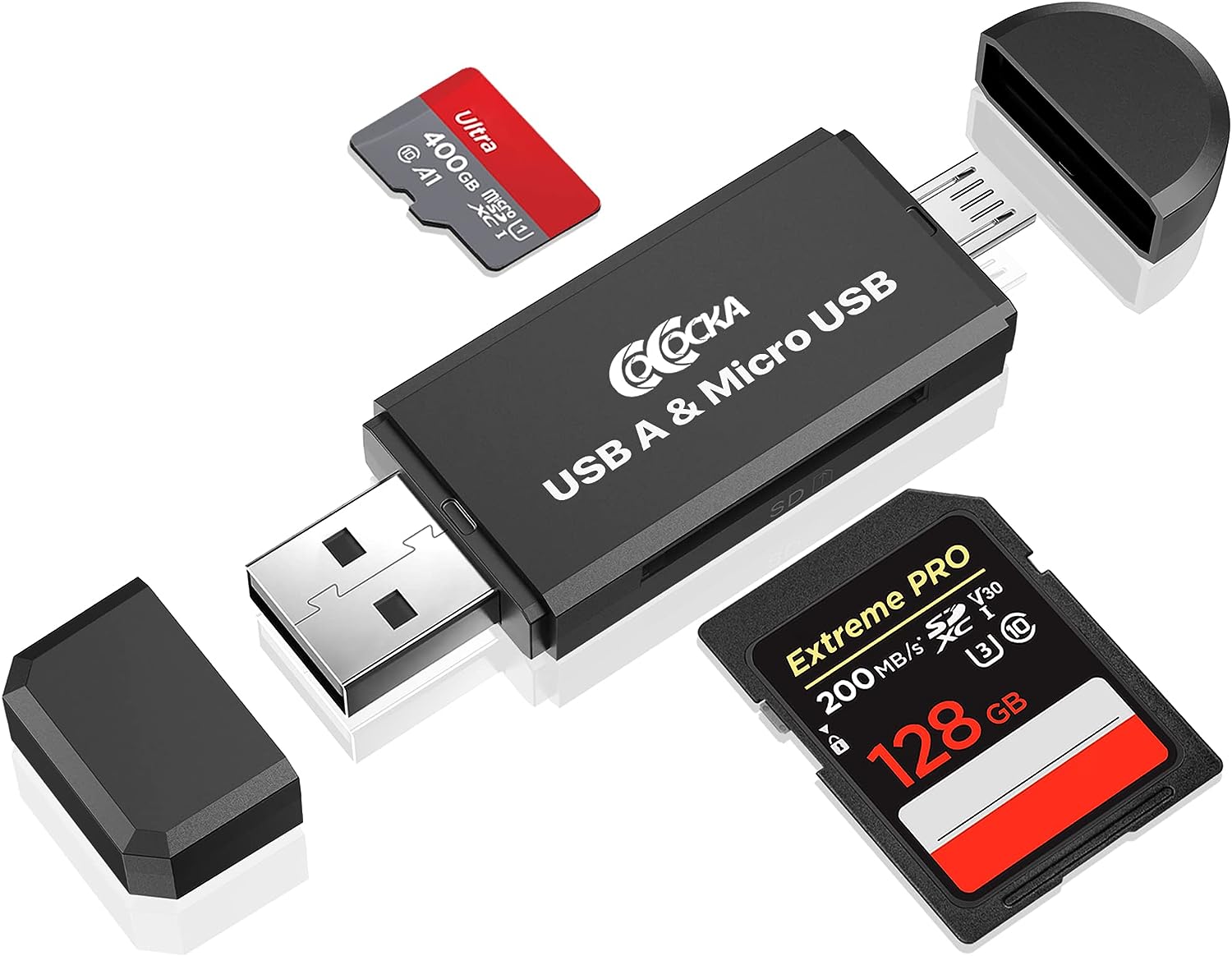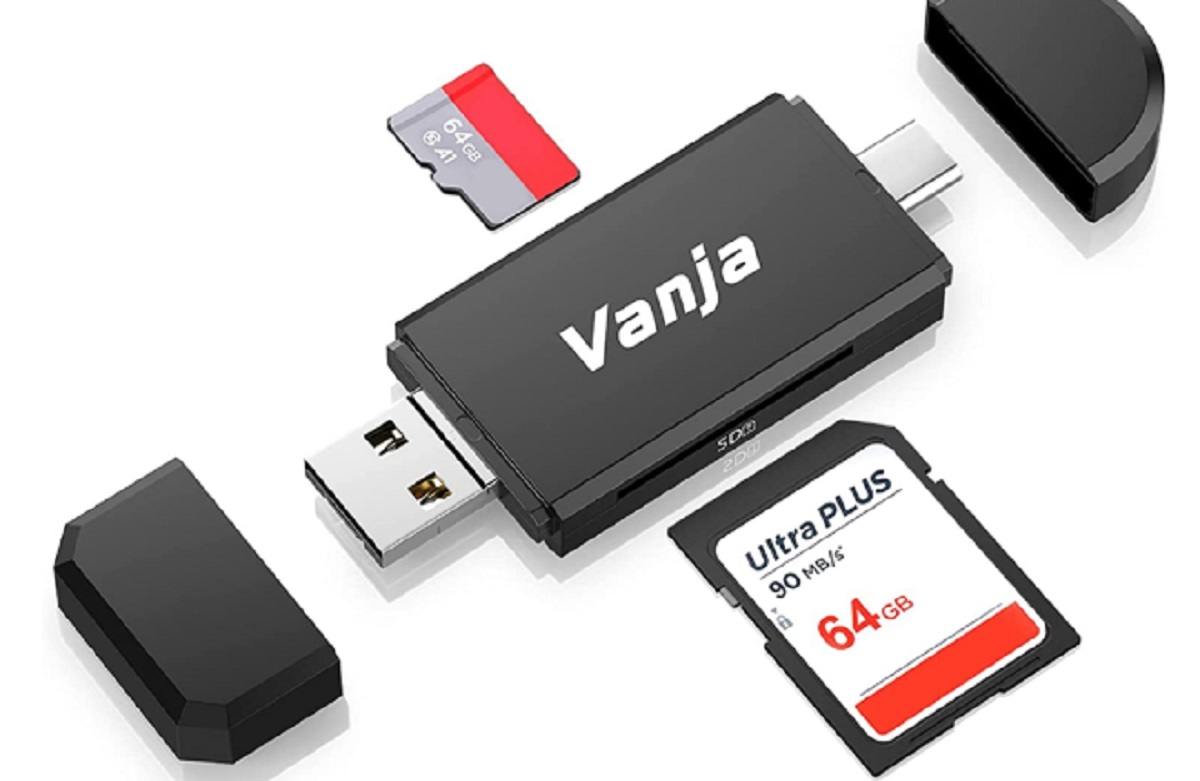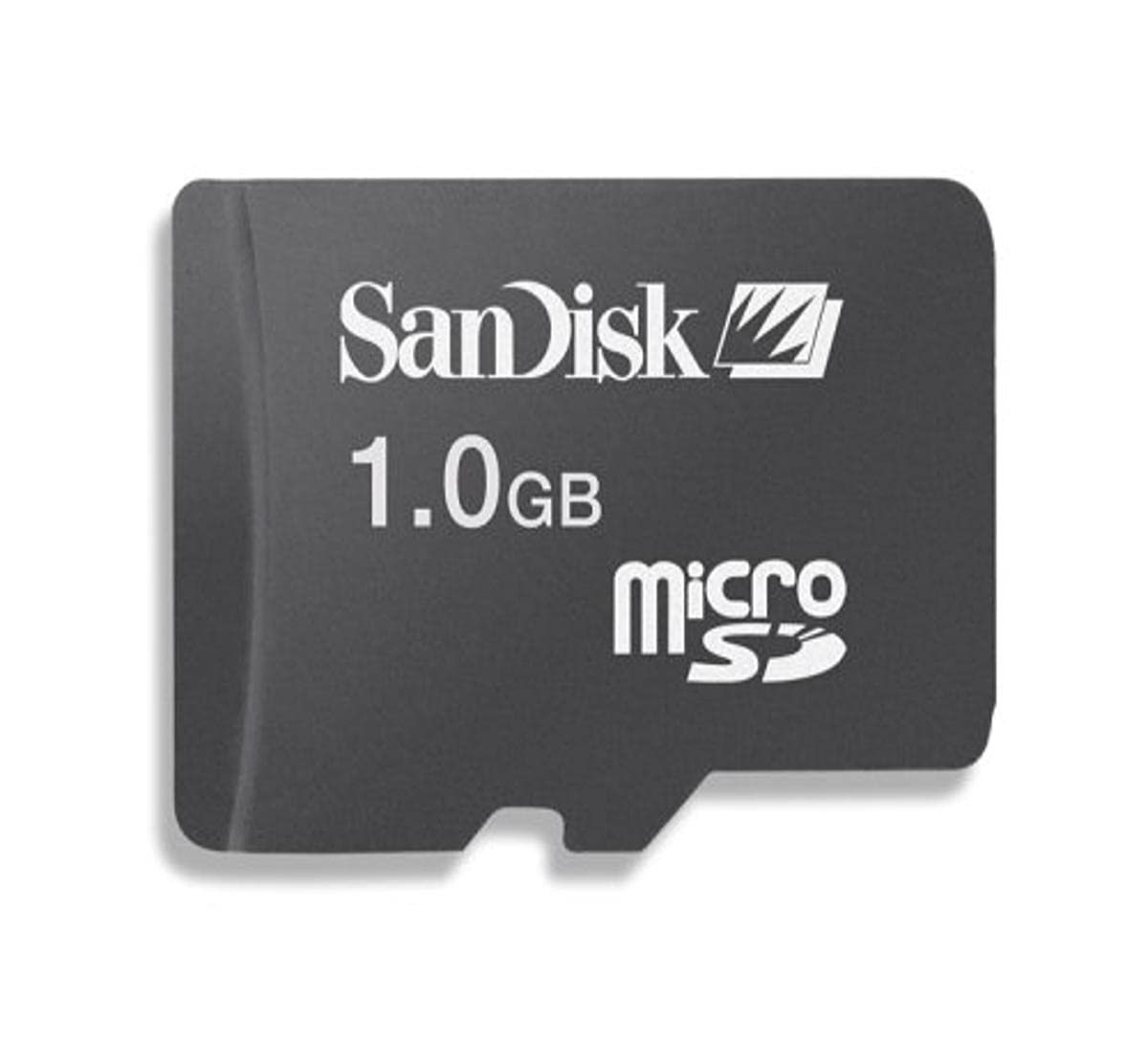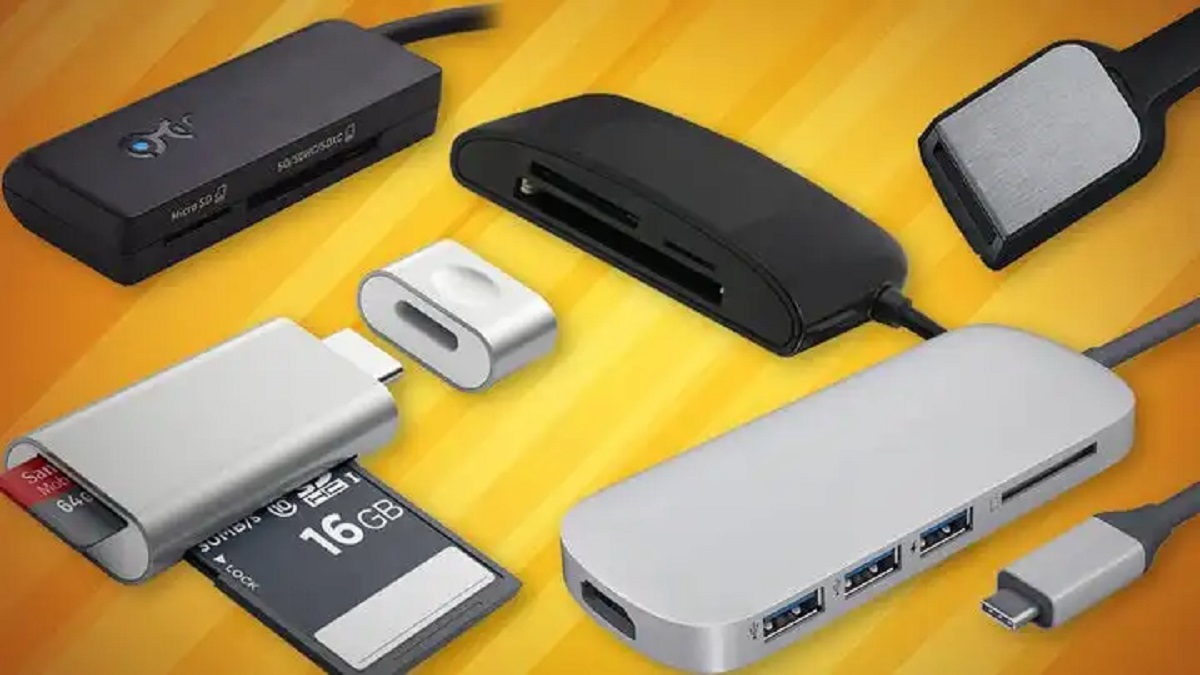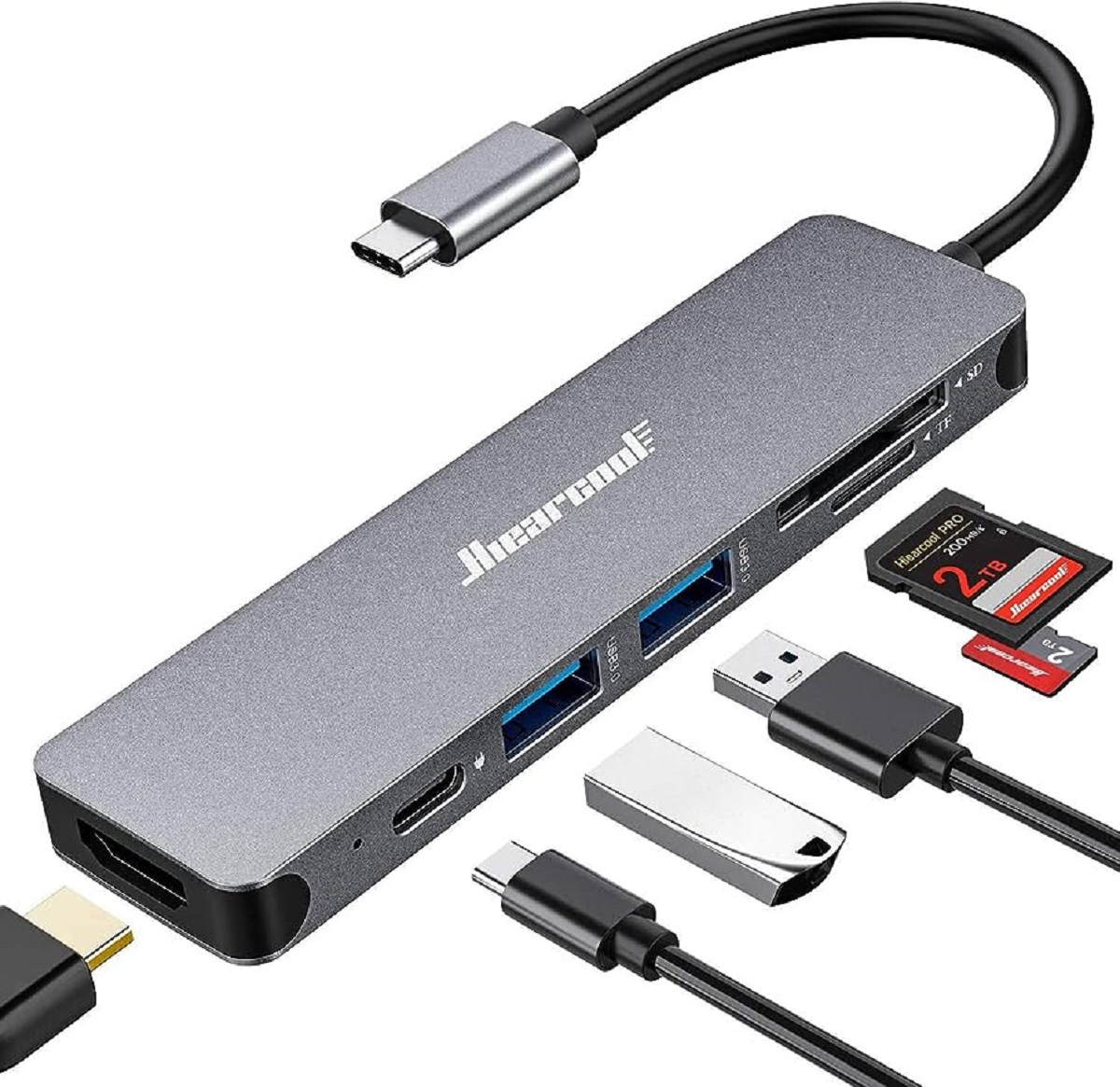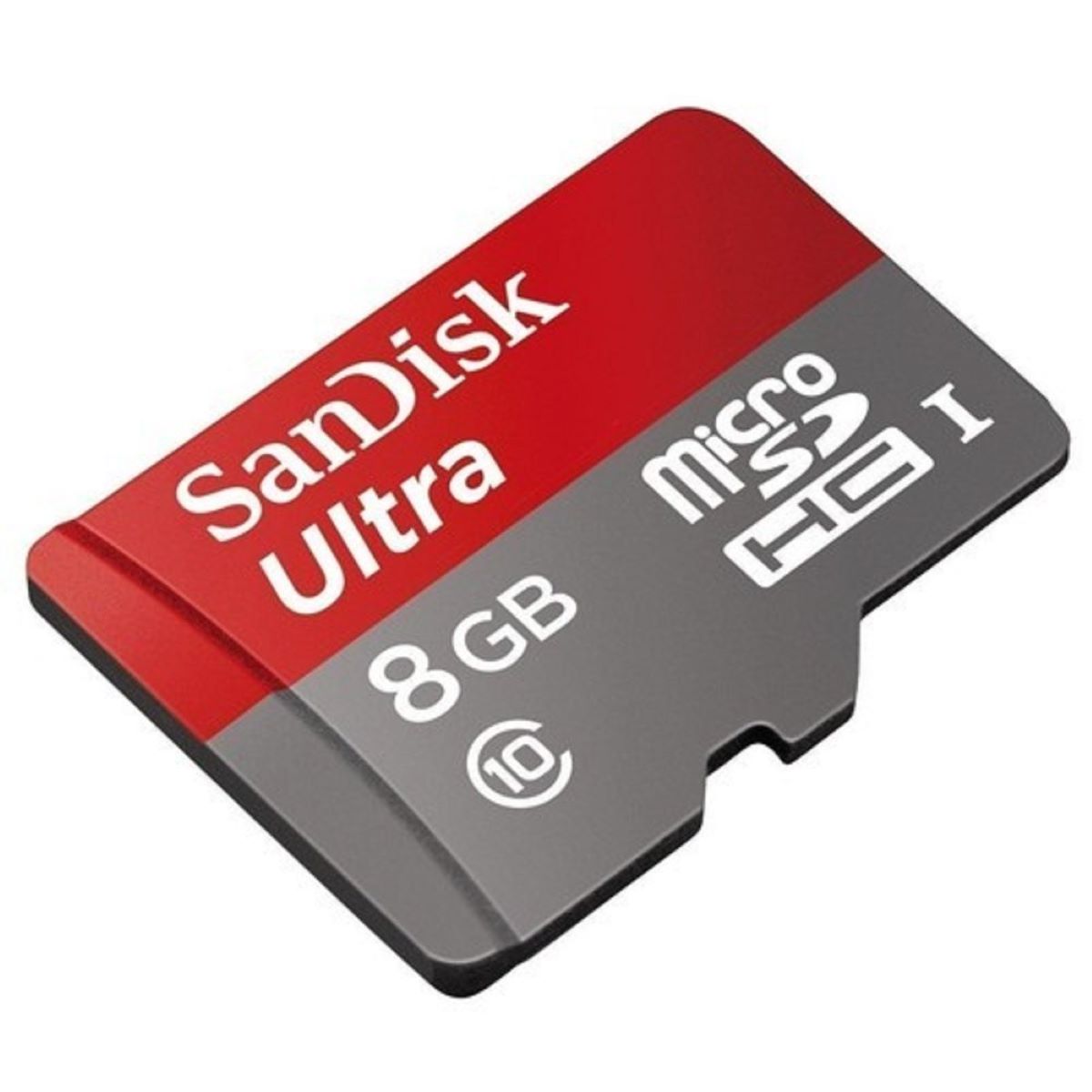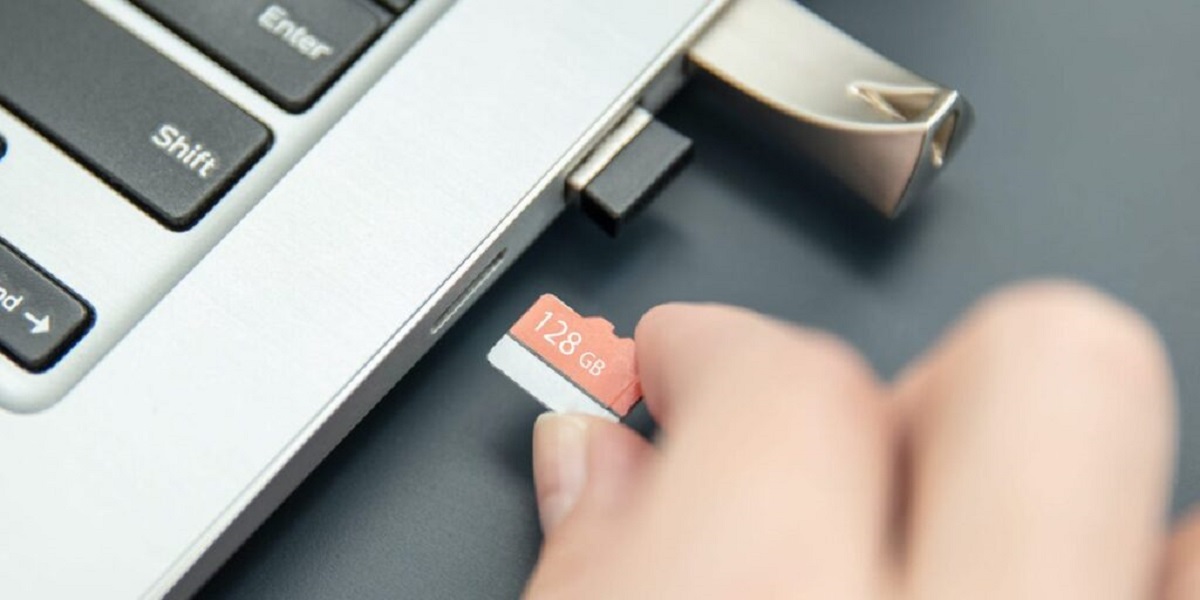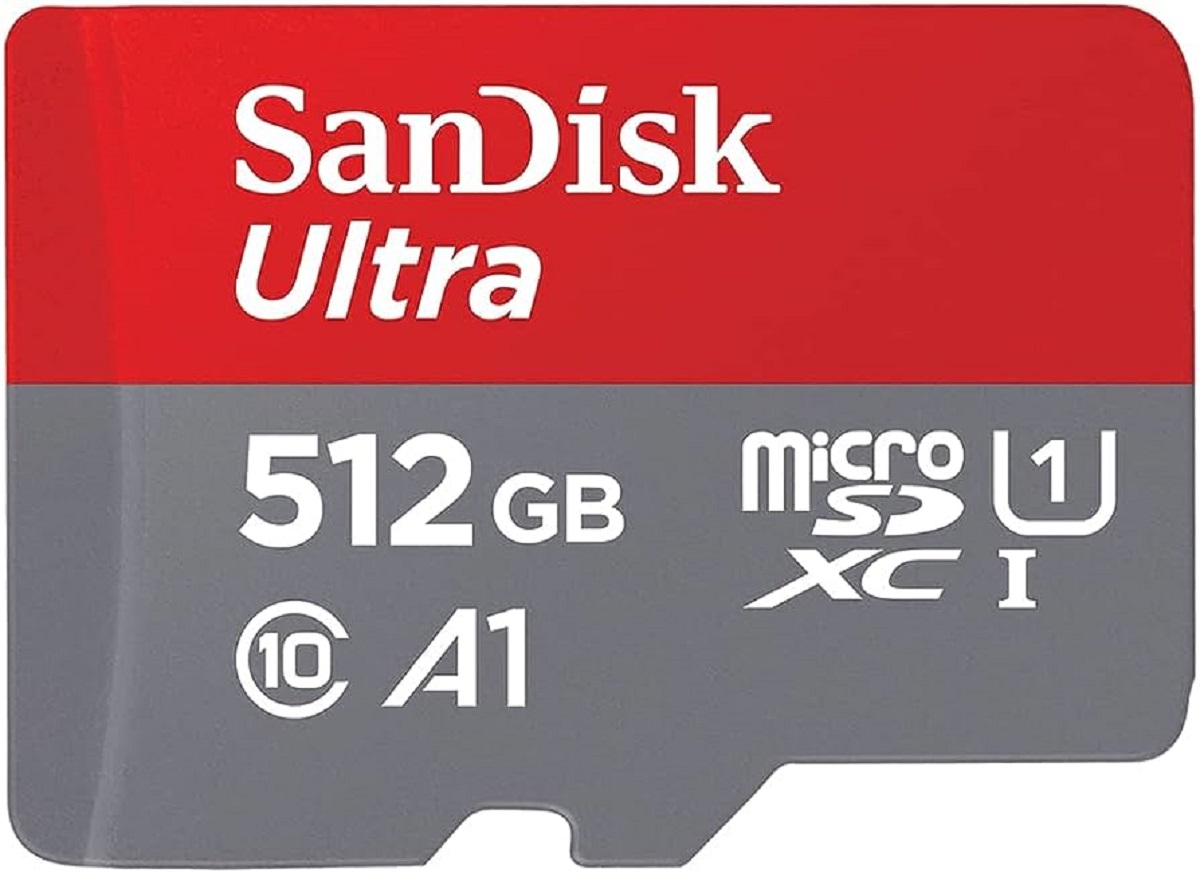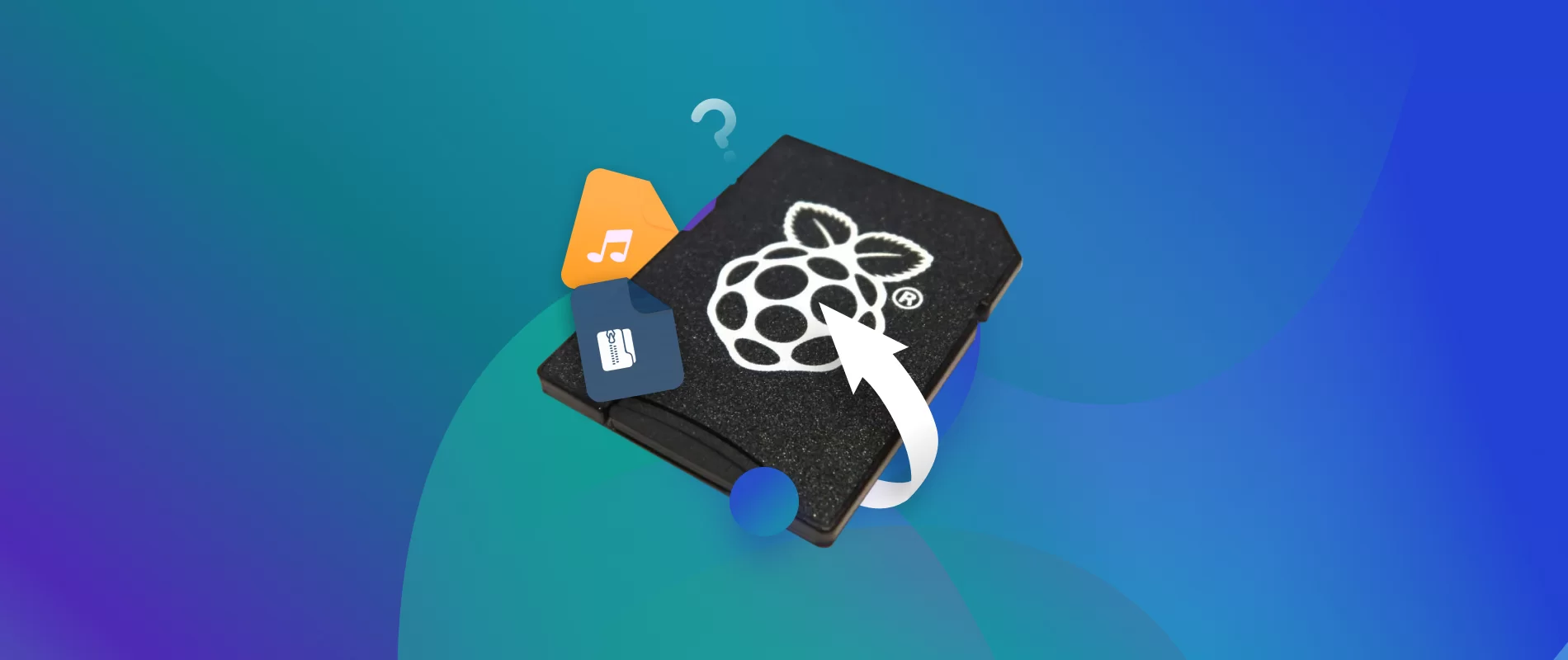Introduction
Welcome to the world of digital storage, where devices like cameras, smartphones, and tablets have become an integral part of our lives. In this era of data-driven society, the need for storing and transferring large volumes of data has become a necessity. This is where SD cards come into play. SD cards, or Secure Digital cards, are compact and versatile storage devices widely used in various electronic devices for storing digital files.
While SD cards are widely popular and offer ample storage capacity, sometimes they can be challenging to use with other devices that do not have an SD card slot. This is where an SD card adapter comes in handy, providing a convenient way to access and transfer data from an SD card to a device that does not have an SD card slot.
An SD card adapter is a small, portable device that allows you to convert an SD card into a different form or size, enabling it to be used with devices that have different card slots. These adapters act as bridging devices, enabling seamless data transfer between different devices without any hassle.
In the following sections, we will explore the different types of SD card adapters, their benefits, limitations, and tips for buying the right one to suit your needs. So, let’s dive in and discover the world of SD card adapters.
Definition of an SD Card Adapter
An SD card adapter is a small device that allows you to use an SD card with devices that do not have an SD card slot. It serves as a bridge between the SD card and the device, enabling seamless data transfer and access to the files stored on the SD card.
The main function of an SD card adapter is to convert the physical format or size of the SD card to match the requirements of the device you want to use it with. The adapter typically has a slot where you insert the SD card, and on the other side, it provides a different type of connection or slot that is compatible with the target device. This allows you to use the SD card with devices such as laptops, desktop computers, digital cameras, and other devices that do not have an SD card slot.
SD card adapters come in various forms, depending on the type of connection they provide. Some adapters convert the SD card into a USB flash drive format, allowing you to plug it directly into a USB port for data transfer. Others may convert the SD card into a microSD card format, enabling you to use it with devices that only have a microSD slot. There are also adapters that convert the SD card into a CF (CompactFlash) card format, commonly used in professional cameras and devices.
Overall, the versatility of an SD card adapter makes it a valuable tool for anyone who regularly works with SD cards and needs to access their data on different types of devices. It eliminates the need to carry multiple memory cards or invest in different types of storage devices, providing a cost-effective and convenient solution.
Types of SD Card Adapters
SD card adapters come in different types, each designed to convert an SD card into a specific format or size that is compatible with various devices. Here are some commonly used types of SD card adapters:
- USB SD Card Adapters: These adapters convert an SD card into a USB format. They have a USB connector on one end, into which you can insert the SD card. This type of adapter allows you to plug the SD card directly into a USB port on a computer or other compatible devices. USB SD card adapters are widely used due to their convenience and compatibility with a wide range of devices.
- MicroSD Card Adapters: As the name suggests, these adapters convert an SD card into a microSD card format. They are used to make an SD card compatible with devices that only have a microSD slot, such as smartphones, tablets, and some digital cameras. The microSD card adapter is a small plastic or metal piece that the SD card fits into, and it can then be inserted into the microSD slot of the target device.
- CF (CompactFlash) Card Adapters: These adapters are designed to convert an SD card into the CF card format. The CF card format is commonly used in professional cameras, audio recorders, and other high-performance devices. By using a CF card adapter, you can use an SD card with a CF card slot, eliminating the need for separate CF cards for different devices.
- ExpressCard Adapters: ExpressCard adapters are used to convert an SD card into an ExpressCard format. ExpressCard is a standard for expansion cards in laptop computers. By using an ExpressCard adapter, you can use an SD card with devices that have an ExpressCard slot, such as laptops and some professional cameras.
These are just a few examples of the different types of SD card adapters available. Each type of adapter serves a specific purpose, allowing you to use an SD card with devices that would otherwise be incompatible. When choosing an SD card adapter, it is important to consider the compatibility with your devices and the type of connection they offer, ensuring a seamless data transfer experience.
Benefits of Using an SD Card Adapter
Using an SD card adapter comes with several benefits that make it a valuable accessory for anyone who works with SD cards. Here are some key advantages of using an SD card adapter:
- Enhanced Compatibility: One of the primary benefits of using an SD card adapter is that it enhances the compatibility of SD cards with a wide range of devices. It allows you to use an SD card with devices that do not have an SD card slot, opening up more options for data transfer and access.
- Convenient Data Transfer: SD card adapters provide a convenient method for transferring data from an SD card to a device without an SD card slot. With the adapter, you can simply insert the SD card into the adapter and then connect it to the target device using the compatible slot or connection. This eliminates the need for additional cables or complex procedures, making data transfer quick and hassle-free.
- Cost-Effective Solution: Instead of purchasing different types of memory cards or storage devices for various devices, using an SD card adapter allows you to utilize the same SD card with multiple devices. This can save you money on buying additional storage solutions and streamline your data management process.
- Portability and Convenience: SD card adapters are small, lightweight, and portable, making them easy to carry around. You can conveniently store them in your bag, pocket, or camera case, ensuring that you have a versatile solution for data transfer wherever you go. This portability makes SD card adapters a great tool for photographers, videographers, and individuals who frequently work with different devices.
- Reduced Clutter: Using an SD card adapter eliminates the need for multiple memory cards for different devices. You can use a single SD card and switch between devices by utilizing the adapter. This reduces clutter and simplifies storage management, ensuring that your data is organized and easily accessible.
These benefits highlight the versatility and practicality of using an SD card adapter. Whether you are a professional photographer or an average user, an SD card adapter provides a seamless and efficient way to use SD cards with various devices, enhancing compatibility and simplifying data transfer.
How to Use an SD Card Adapter
Using an SD card adapter is relatively straightforward and requires only a few simple steps. Here is a step-by-step guide on how to use an SD card adapter:
- Ensure that you have an SD card adapter that is compatible with the type of SD card you are using (e.g., microSD, SDHC, SDXC).
- Insert the SD card into the appropriate slot or opening on the adapter. Make sure to align the metal contacts on the SD card with those on the adapter.
- If using a USB SD card adapter, insert the USB end of the adapter into an available USB port on your computer or device.
- If using a microSD card adapter, insert the adapter with the SD card into the microSD slot on your device. Ensure that the adapter is securely inserted to avoid any connection issues.
- If using a CF card adapter, insert the adapter with the SD card into the CF card slot on your device. Again, make sure it is properly inserted for a stable connection.
- Once the adapter is connected to the device, the operating system should recognize the SD card as removable storage. You can then access the files on the SD card through the file explorer or file manager of the device.
- To transfer files between the device and the SD card, simply drag and drop or copy and paste the files to or from the SD card. Ensure that the transfer is complete and wait for any ongoing read/write operations to finish before disconnecting the adapter or removing the SD card.
- When you are finished using the SD card, safely eject the adapter from the device. On a computer, use the “Safely Remove Hardware” option before physically removing the adapter. On a mobile device, follow the manufacturer’s instructions to safely eject the adapter.
It is important to handle the SD card and adapter with care to prevent damage to the card or the adapter’s connectors. Avoid applying excessive force or bending the card or adapter.
By following these steps, you can easily use an SD card adapter to access, transfer, and manage your data across various devices without any compatibility issues.
Limitations of SD Card Adapters
While SD card adapters offer numerous benefits, it is important to be aware of their limitations. Understanding the limitations can help you make informed decisions and avoid potential issues. Here are some common limitations of SD card adapters:
- Compatibility: Although SD card adapters enhance compatibility, there can still be limitations based on the specific device and the adapter connection type. Not all devices may support the same type of adapter, so it is essential to ensure that your device is compatible with the specific adapter you intend to use.
- Speed: SD card adapters may not provide the same data transfer speeds as using an SD card directly in a compatible device. The speed of data transfer using an adapter will depend on various factors, including the quality of the adapter and the connection type. High-speed data transfer may be limited or not possible with certain adapters.
- Physical Size: Some SD card adapters can add bulk to your device or block adjacent ports due to their physical size. This can be a concern, especially for devices with limited space or closely placed ports. It is important to consider the size of the adapter and ensure that it does not interfere with the usage of other ports or components.
- Reliability: Although most SD card adapters are designed to be durable, they might not be as reliable as using an SD card directly in a compatible device. An adapter adds another layer of complexity, and there is a slight risk of poor contact or connection issues. It is crucial to handle the adapter and the SD card with care to avoid damage or data loss.
- Device Compatibility: While SD card adapters allow you to use an SD card with devices that do not have an SD card slot, some devices may have limitations on the types and capacities of SD cards they can support through an adapter. It is advisable to consult the device’s user manual or specifications to ensure compatibility with the adapter and the SD card.
- Limited Functionality: In some cases, using an SD card through an adapter may limit certain functionalities or features of the device. For example, a device that natively supports a specific memory card may have additional features like automatic file organization or direct recording capabilities that may not be available when using an adapter.
Despite these limitations, SD card adapters remain a valuable tool for accessing and transferring data between different devices. By understanding these limitations, you can effectively manage your expectations and use SD card adapters with caution and care.
Tips for Buying an SD Card Adapter
When it comes to buying an SD card adapter, there are a few important factors to consider to ensure that you make the right choice. Here are some tips to help you buy the most suitable SD card adapter for your needs:
- Compatibility: Before purchasing an SD card adapter, ensure that it is compatible with the type of SD card you intend to use. Different adapters support different types of SD cards, such as microSD, SDHC, or SDXC. Check the adapter’s specifications to ensure compatibility with your specific SD card format.
- Connection Type: Consider the type of connection the adapter provides. USB adapters are the most common and versatile, allowing you to connect the SD card to a USB port. However, if you require compatibility with devices that have other specific card slot types, such as microSD or CF, choose an adapter that offers the appropriate connection type.
- Build Quality: Look for an SD card adapter that is well-built and reliable. Opt for adapters from reputable brands known for producing high-quality accessories. Read reviews and feedback from other users to get an idea of the durability and overall build quality of the adapter.
- Data Transfer Speed: If fast data transfer speed is important to you, check the specifications of the SD card adapter. Some adapters may mention their rated transfer speed. Keep in mind that the actual speed may also depend on the SD card’s speed capabilities and the device you are using.
- Portability: Consider the portability factor if you frequently need to carry the adapter with you. Look for compact and lightweight options that are easy to carry in your bag or pocket, without adding unnecessary bulk or inconvenience.
- Price: Compare prices from different retailers and online platforms to ensure you are getting the best value for your money. However, be cautious of overly low-priced adapters, as they may compromise on quality and reliability. Find a balance between affordability and quality when making your purchase.
- Warranty and Customer Support: Check if the SD card adapter comes with a warranty, as this provides added peace of mind. Additionally, ensure that the manufacturer offers good customer support in case of any issues or queries regarding the adapter.
- Read User Reviews: Reading reviews and feedback from other users can provide valuable insights into the performance, reliability, and compatibility of the SD card adapter. Look for both positive and negative reviews to get a well-rounded understanding of the product before making a decision.
By keeping these tips in mind, you can make an informed decision and choose an SD card adapter that meets your requirements in terms of compatibility, reliability, speed, and overall value for money.
Conclusion
SD card adapters provide a convenient and versatile solution for using SD cards with devices that do not have an SD card slot. With various types of adapters available, such as USB adapters, microSD card adapters, CF card adapters, and ExpressCard adapters, you can easily overcome compatibility limitations and transfer data seamlessly between different devices.
By using an SD card adapter, you can enjoy several benefits, including enhanced compatibility, convenient data transfer, cost-effectiveness, portability, and reduced clutter. They provide a cost-effective alternative to purchasing multiple memory cards and simplify the process of managing and accessing data across various devices.
However, it is important to be aware of the limitations of SD card adapters. These limitations include compatibility constraints, potential speed limitations, physical size considerations, reliability concerns, device-specific limitations, and certain functionality trade-offs. Understanding these limitations can help you make informed decisions and avoid potential issues when using SD card adapters.
When purchasing an SD card adapter, consider factors such as compatibility, connection type, build quality, data transfer speed, portability, price, warranty, and user reviews. By doing so, you can select the most appropriate adapter that meets your specific needs and ensures a seamless experience when using SD cards with various devices.
With the right SD card adapter in your arsenal, you can unlock the full potential of your SD cards and enjoy hassle-free data transfer and access across a wide range of devices. So, choose wisely and embrace the convenience and versatility that SD card adapters bring to your digital storage journey.







